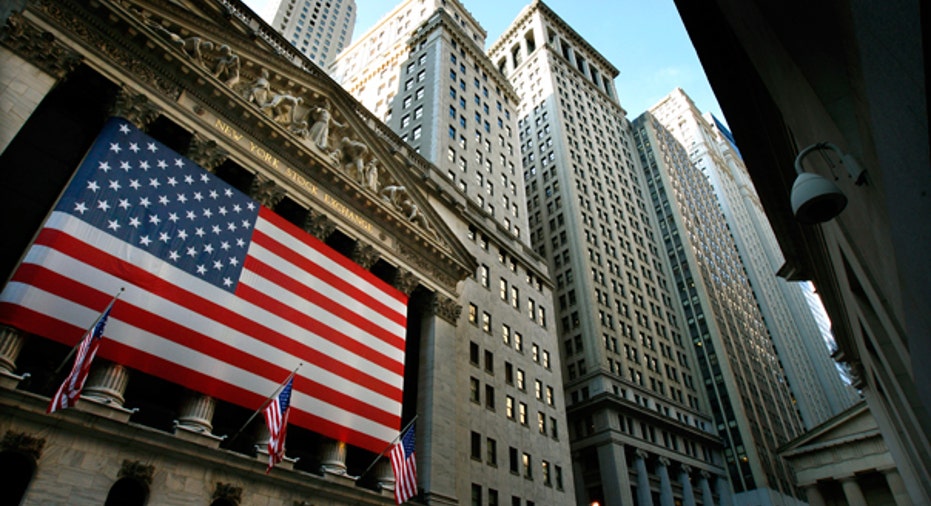Goldman Sachs: Stock Buybacks to Rescue the Stock Market

Stock buybacks are still coming in strong, Wall Street analysts say.
Fears are growing that the U.S. is on the cusp of a recession, with possibly three straight quarters of S&P 500 corporate profit declines, four straight quarters of revenue declines, another bad print for the ISM manufacturing survey at 48.2, tepid construction spending, rising jobless claims, and a possible slowdown in personal consumer spending.
Which is why stock buybacks have never been more in focus, with 2016 now on pace to be one of the fastest starts on record for share repurchases. New S&P 500 announcements already year-to-date total $63 billion, notes Goldman Sachs (NYSE:GS). “Buybacks represent a tailwind to share prices and a reassuring sign that a volatile market is not hampering corporate spending,” Goldman says, adding, “in each year since 2010, corporate demand via buybacks and M&A has represented the largest source of inflow to the U.S. equity market. We expect this pattern will repeat in 2016.”
When a company buys back stock, it helps earnings per share results, since the profits are spread out over a lower denominator (shares), making the EPS look a lot bigger. Already, more than three-quarters of the S&P 500 have reported their fourth quarter 2015 earnings, which means their buyout blackout periods are ending and they can soon crank back up their stock buyback machines. That includes Gilead Sciences (NASDAQ:GILD)($12 billion) and 3M (NYSE:MMM) ($10 billion), as well as GE (NYSE:GE) (potentially $26 billion) and AIG (NYSE:AIG) ($25 billion), companies which have announced plans to return large amounts of cash to investors through an unspecified mix of buybacks and dividends.
And lots of other companies have “dry powder” in their buyback plans that could let them increase share repurchases, Goldman Sachs adds. They include Apple (NASDAQ:AAPL), “which contributed $35 billion of the roughly $580 billion in 2015 S&P 500 buybacks,” and “has another $30 billion of outstanding authorizations,” the investment bank figures. Microsoft (NASDAQ:MSFT) can deploy another $14 billion this year, and Qualcomm (NASDAQ:QCOM), $5 billion, it says.
S&P Capital IQ says dividend and stock buybacks for S&P 500 companies have already grown a whopping 84% to $934 billion in 2014, up from $507 billion in 2005.
However, William Lazonick, a professor of economics at the University of Massachusetts Lowell, and author of Sustainable Prosperity in the New Economy? Business Organization and High-Tech Employment in the United States, says there’s a warning for the U.S. economy when it comes to stock buybacks.
Prof. Lazonick warns that companies are using shareholder capital to line their pockets with more lucrative stock options and stock grants, which make up the majority of executive pay, “instead of investing their profits in growth opportunities, corporations.” He estimated that the 449 firms in the S&P 500 that were publicly listed from 2003 through 2012 “used 54% of their earnings—a total of $2.4 trillion—to buy back their own stock. Dividends absorbed an extra 37% of their earnings. That left little to fund productive capabilities or better incomes for workers.”
Stock buybacks are not close to their record year of 2007, right before the market sunk, Goldman says. But, importantly, Goldman advises that “the increase in buyback activity following fourth quarter earnings season usually coincides with the outperformance of large buyback stocks.”
The investment bank tracks a bunch of stocks in its “Total Cash Return to Shareholders Basket” that send back the most amount of money to shareholders in the form of dividends and buybacks. Goldman says: “Accordingly, our sector-neutral basket of S&P 500 stocks with the largest trailing four-quarter buybacks and dividends has outperformed the S&P 500 during February in 19 of the last 21 years.” The stocks in this basket include AIG, Coca-Cola Enterprises (NYSE:CCE), and AbbVie (NYSE:ABBV).



















